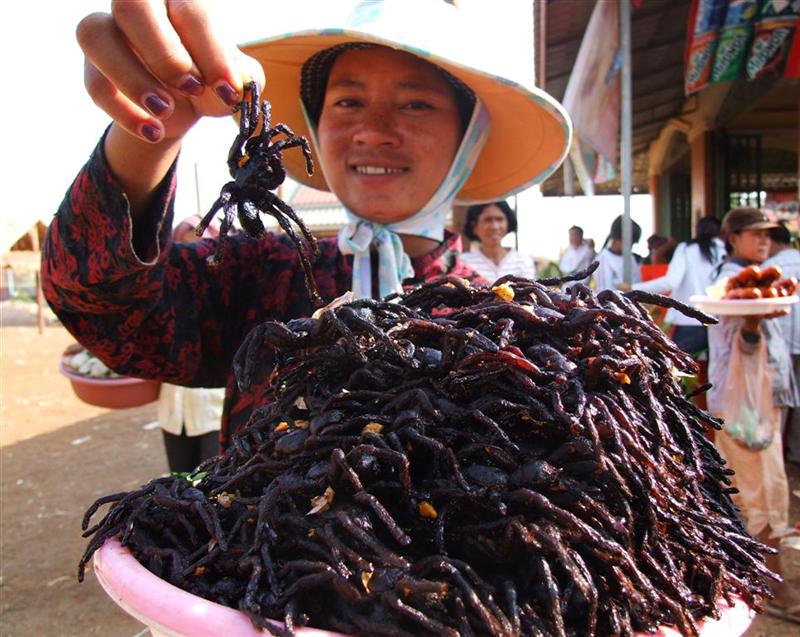This article introduces 10 strange and unusual foods from around the world. From the fertilized duck egg, Balut in the Philippines, to Kiviaq in Greenland, made from small seabirds packed into a seal skin and buried underground for several months, each dish has its unique taste and preparation methods. Other dishes include Huitlacoche, a fungus that grows on ears of corn in Mexico, and Surströmming, a fermented herring dish that is traditional in Sweden. For some, these dishes may seem unappealing or even repulsive, but for others, they are a treasured part of their culinary heritage.
10 Strange and Unusual Foods People Eat Around the World
1. Balut
Balut is a popular street food in the Philippines. It is essentially a fertilized duck egg that is boiled and eaten whole. The egg is incubated for around two weeks before it is boiled, which allows the developing embryo to mature. The egg is then cracked open, revealing a partially formed duckling inside that is still encased in the yolk and egg white. The dish is often seasoned with salt and vinegar and eaten straight out of the shell.
2. Huitlacoche
Commonly known as “corn smut,” huitlacoche is a fungus that grows on ears of corn. The fungus turns the kernels into a soft, edible mass with a smoky flavor, and is often used as a filling for tacos or tamales in Mexico. Some people describe the taste as similar to truffles.
3. Casu Marzu
Casu marzu is a type of sheep’s milk cheese from Sardinia, Italy. What makes it strange is the presence of live maggots inside the cheese. The maggots are intentionally introduced to the cheese to speed up the fermentation process and add flavor. The cheese is typically eaten with bread, but diners are advised to cover their eyes while eating to avoid any accidental maggots shooting out.
4. Jellied Moose Nose
Jellied moose nose is a traditional Canadian dish made from, as the name suggests, a moose’s nose. The nose is boiled with onions and spices, then the meat and cartilage is removed and chopped into small chunks. The chunks are then added to a broth made from the nose liquid, along with gelatin, to create a dish that resembles a savory gelatin.
5. Rocky Mountain Oysters
Rocky mountain oysters are a delicacy in Western United States, particularly in Colorado and Montana. Contrary to what the name suggests, these are not oysters from the sea, but rather bull testicles. The testicles are peeled, rolled in batter, and deep fried, resulting in a crispy, crunchy snack.
6. Escamoles
Escamoles are a popular dish in Mexico, made from the larvae of giant black ants. The larvae are collected from ant nests in the desert and are often sautéed with garlic and butter. The texture is said to be similar to cottage cheese, and it has a nutty, buttery flavor.
7. Shirako
Shirako is a delicacy in Japan that is made from the milt, or sperm sacs, of male fish, usually from cod or pufferfish. Despite its unappealing appearance, shirako is highly prized for its delicate flavor and creamy texture. It is often served as sashimi or cooked in a hot pot.
8. Kiviaq
Kiviaq is a traditional dish from Greenland, made from small seabirds called auks that are packed into a seal skin and buried underground for several months. The fermentation process preserves the meat and creates a pungent flavor. The skin is then cut open and the birds are eaten whole, including feathers, beaks, and bones.
9. Surströmming
Surströmming is a type of fermented herring that is a traditional dish in Sweden. The fish is fermented in brine for several months, resulting in a pungent, foul-smelling dish. It is typically eaten with boiled potatoes, onion, and sour cream, and is often served outdoors due to the strong odor.
10. Tarantulas
In some parts of Cambodia, tarantulas are considered a delicacy. The spiders are marinated in sugar, salt, and garlic before they are deep fried or roasted over an open flame. Locals claim they taste like a cross between chicken and cod, with a crispy texture on the outside and a soft, juicy interior.
Conclusion
There are countless strange and unusual foods from around the world. For many people, these dishes may seem unappetizing or even repulsive, but for others, they are a treasured part of their culinary heritage. Whether you are a daring food adventurer or prefer to stick with familiar flavors, it is always fascinating to learn about the diverse range of cuisines that exist throughout the world.
